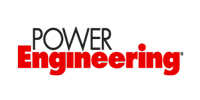
Flow battery technology in energy storage could eventually replace or compete with diesel generation and lithium ion as part of a microgrid package but needs to improve on load reliability and cost-competitiveness.
This conclusion ends a new report by renewables and energy efficiency firm Ameresco. The company is working with 2ndPath Energy on U.S. Department of Defense-funded research into vanadium redox flow (VRF) battery energy storage systems as an alternative for diesel generators (DG) in microgrid applications.
“First, based on assessment of the reliability modeling results and critical load coverage curves produced, we can conclude that a VRF battery enabled microgrid can provide satisfactory reliability performance at all five sites by meeting the baseline performance requirement over a 168-hour outage that could occur at any time,” reads an executive summary of the Ameresco-2ndPath Energy report.
“However, we can also conclude for all five sites that critical load coverage at 168 hours was below the variable load DG-only coverage by between 1.6% to 3.0%,” the executive summary added. “This is to be expected since the newer VRF technology is assumed to have lower reliability factors that the DG technology.”
Vanadium redox battery technology utilizes the ability of vanadium ions in solutions in various oxidation states to store potential energy. It has been studied for years but has not found a way to market at scale.
Lithium-ion battery technology, meanwhile, dominates the energy storage landscape and makes up more than 90 percent of the U.S. battery storage installed capacity. VRB offers the potential for a competitive, comparative solution but not yet.

Recent Comments